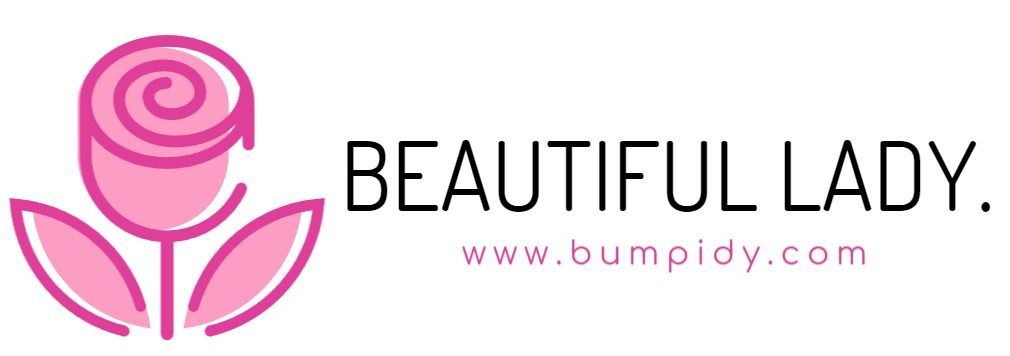Do you know how to develop into your greatest self?
A monk embarked on a 1,000-day marathon in 1885. In particular, for 100 days, he ran 40 kilometers every day with the other monks. You did really read correctly. 40 miles a day! They spent five years doing this. They are referred to as marathon monks, or Gyoja. These monks accomplish the unthinkable.
They run 40 kilometers a day for 100 days during the first five years.
In their sixth year, they ran 60 kilometers every day for 100 days.
In the seventh year, they run 84 kilometers a day for 100 days, followed by an additional 100 days of 40 kilometers a day.
Oh, I see. I neglected to mention. In the fifth year of the 1,000-day race, they must go without food, drink, or rest for 7.5 days.
Only 46 men have finished the 1,000-day marathon between 1885 and 1988.

These abbots brave to take on impossible tasks.They are adept at being their greatest selves.They have the audacity to challenge themselves. They take risks to excel.
Do You Wish to Develop Into Your Best Self?
I’m hoping you said “yes.” Indeed, if your response wasn’t a booming “yes” accompanied by a mental fist pump, then.
Then perhaps you need more self-assurance, and I’m here to help.
The greatest people have the self-assurance to aspire to be the best in the first place. This is a HUGE reality. Therefore, if you lack that confidence, it’s possible that you’ve been misled—a falsehood that we’ve all been told repeatedly.
The deception is this: all it takes to excel is hard work.
Numerous times in our lives, our parents, authors, and even movies have deceived us with false information. We’ve been instructed to focus on our task and to put our heads down. Years of laboring later, the magic begins to happen. We can only feel good about ourselves when we have worked hard. Here’s the main issue, though:
Not everything that works hard pays off.
All that occurs when we put a lot of effort into anything is that we become proficient at it. You’ll be proficient at counting pennies if you work as a cashier at Walmart. Who knows, maybe you’ll become the greatest at it.
Is it, however, the best version of you?
The problem is that individuals will excel at what they detest if they don’t LOVE what they are doing.
I was like this. I was told I was good at foreign languages, so I studied them in college. Although I wasn’t really passionate about languages, I was good at picking them up fast. After four years of education, I came to the realization that I detested every class.I wanted to enroll in additional sociology, writing, and psychology courses.
I have the following suggestion for you if you are content to lead a mediocre life and don’t love what you are doing:
Put this post down now. Watch Netflix or quickly scan Facebook. For those of you who are aware of your higher calling, this post is for you.
However, there is hope if you are dissatisfied and wish to improve. I am living proof that there is hope, so I know there is hope.
I was chosen as my graduating class’s most awkward person not too long ago.
Nobody imagined I would publish a book explaining how to enthrall every person you encounter.
Nobody believed I would possess the bravery to deliver my own TED talk.
Nobody anticipated that I would run People School, a people skills training.
However, I’ve completed all of that and here I am now. I disproved their assertions by initiating the process of becoming my best self.
Dr. Stan Beecham delves into the ways that brilliant minds think differently in his book Elite Minds.
The main idea is this:
The ability to regulate one’s thoughts, rather than physical prowess, is what distinguishes high achievers in any subject when closely examined.
— Stan Beecham
Here’s how to become your best with this easy equation:
Purpose x Courage x Control x Luck x Hard Work = The Best Version of You
You need to take control of each of these factors (which we’ll discuss below) if you want to become your best self. However, initially…
WARNING: If you find yourself thinking any of the following while reading this post:
“I have previously heard this.”
OR
“It won’t work out for me.”
After that, it’s time to start over from scratch. Do you honestly think you want to be the greatest? When experts hear these ideas, they dismiss them. They reframe using these cognitive exercises:
I’ve heard of this previously. Why did I ignore it the first time around? It must be significant if I’m hearing it again.
I’ll figure out a method to make this work in my favor.
Additionally, you might want to start with the objectives you’ve established for yourself if you’re having trouble reframing. Establishing appropriate goals can boost your self-esteem and sense of accomplishment:
How To Use Science To Create Better Goals
Do you consistently set the same objectives? It’s not your fault if you’re not reaching your objectives!
Allow me to demonstrate the foundation for defining and achieving your most ambitious goals using science.
To help you become the best, consider these ten steps:
First Step: Determine Your Goals
Have you ever seen the Jiro Dreams of Sushi documentary?Jiro Ono, an 85-year-old who plays himself in this movie, is widely regarded as the best sushi chef in the world.
Famous individuals from all over the world travel in to experience Mr. Ono’s $300 sushi dinner, which is frequently booked months in advance, since the sushi is that good.
“I was born in Hawaii and ate a lot of sushi, but this was the best sushi I’ve ever had in my life,” declared Barack Obama.
Thus, how did Jiro rise to the top as a sushi maker? His one and only goal in life was to finish his lifelong quest to make the ideal sushi.That was all that was necessary for Jiro. He didn’t want to build the biggest sushi mall in the world or start a chain of eateries. One flawless slice of sushi, please.
Thus, this is the straightforward knowledge held by all professionals in their field:
You must understand your mission if you want to become the finest version of yourself.
How?
Let’s explore how you might start to discover your mission.Consider the thing you are currently working on the most. That thing is most people’s jobs. In actuality, we labor for more than 13 years of our lives on average. Let’s say that after 5, 10, or 15 years of consistently performing your work, you’ve finally mastered it.
Would you be satisfied, you may ask? Is that the best possible version of you?
Now, I’m not arguing that if you want to be an astronaut or painter, you have to give up your current career. No, sometimes we have goals other than our jobs. All we need to do sometimes is set the table with bread.
However, what I’m trying to say is that sometimes we need to think outside the box in place of working hard.
Consider this: what do you want to excel at? It’s not necessary to be famous or powerful to be the best.
Become the greatest parent possible.
Become the most productive worker.
Become the most effective leader.
Become the most ideal partner.
Don’t just exist.
Strive to be the greatest.
The Exercise for the Best Version of Yourself:
Consider your objective. What is it that you genuinely wish to excel in? ________________________ Put it in writing.
My post on finding your vocation has a handy exercise that you could find helpful if you’re struggling to come up with what you’re good at. It only takes a few minutes to complete.
Step 2: Admit Your Fear of Failing
Recognizing that you might not make it is the next step. Yes, in actuality.
People who aspire to be the finest versions of themselves frequently experience fear of failure. And that’s a positive aspect. Inquiring
“How do I know I can make it?”
“How can I lose time?”
“What happens if I don’t succeed?”
Research even indicates that over 75% of business endeavors fail in less than ten years. Does that imply that you ought to give up now? Quite the reverse, actually. Those who can embrace their fear and learn to live with it are the ones at the top.
What does it mean to be afraid of failing?
The emotional and mental realization that achievement might not be achievable is known as fear of failure. While having too little fear of failing could not inspire you enough, having too much dread of failing can impede progress and performance.
Actually, having a small amount of fear can help you accomplish your objectives more. For this reason, Dr. Beecham advises us to set goals that we believe have a 60% rather than a 100% probability of succeeding.
The remaining forty percent? The forty percent who say, “Everything I’ve ever worked for will be for nothing if I fail?The one thing you need to truly get moving is that fear.
The truth is, fear commands your entire focus. You are totally in the present while you are fleeing from a group of wild dogs.
You are motivated to accomplish your goals by fear.
Furthermore, it is pointless to pursue goals that are not terrifying. Consider your aspirations and goals. Do they have sufficient size? How likely are you to succeed in them? Do you possess the emotional intelligence needed to face your fear and take action?
The Exercise for the Best Version of Yourself:
Do your aspirations cause you any fear?
They are too easy if you are quite certain that you can accomplish them. Try to get 60/40!
If necessary, you can delve into scientific methods to discover how to make goals and set them with a mere 60% likelihood of success.
And have you ever heard the saying, “Success is killed by fear”? It’s true that having too much fear can hinder your success. However, they overlooked one crucial detail:
Success is killed by fear, while dreams are killed by daydreaming.
Step #3: Take Mental Control
I now tend to my garden for a few of hours each week. Actually, my spouse and I recently planted pomegranate, fig, and mandarin orange trees!

However, other people might detest getting their hands dirty and planting seeds, not to mention the amount of mulching, composting, and watering that’s involved. However, I find that when I’m gardening, I’m completely focused and at ease.
And that’s excellent news, since 2,250 participants in the study discovered that we spend over half of our waking hours unconscious. Daniel Gilbert, the author of Stumbling on Happiness, found that 46.9% of the time we are not paying attention to what is going on around us or what we are doing.
Rather, we are examining our own minds with our time. We call this condition “mind wandering.”
Because of this tendency to daydream, “counting pennies” for some people can be the worst thing ever, while for others it can be the closest thing to sliced cheese. When our thoughts stray, we pursue our objectives carelessly and neglect to consider the precise distance we are covering or the obstacles preventing us from reaching our full potential.
The most unexpected aspect about mind wandering is that it rarely results in happiness.
This implies that you are miserable for over half of the time that you are conscious. Take a moment to consider that.
When our thoughts stray, we become autopilot and base our objectives on what other people have previously accomplished. We believe:
Bob at work only made $5,000, so I don’t think I can do much better.
Alternatively, “This invention is probably not even possible because it has never been done before.”
What aspects of your dreams have you been taught are impossible to come true? And above all…
What have you conceded you are incapable of achieving?
Consider this: are you familiar with the tale of the elephant and the rope?
This is the main plot summary:
An individual was walking near some elephants. He abruptly stopped.
He noticed that some elephants were fastened to trees. However, the man noticed that these enormous creatures were simply connected by a tiny, basic rope.
He questioned the owner of the elephant about their tie-up.
In response, the owner of the elephant said, “The elephants are tied with a small rope when they are very young.” And it’s plenty to keep them there. However, as kids age, they are conditioned to think that they are powerless to overcome this. Thus, they never act.
You are the elephant bound to the rope if you accept your situation as it is.Above all, discovering your ingrained ideas is a fantastic way to “reinvent” yourself (we’ll discuss how to alter your views in the following stage).
According to Beecham, one of the key distinctions between high achievers and underachievers is awareness:
“Expert rivals make it their mission to master conscious thought and behavior while also comprehending and controlling their unconscious mind.”
— Beecham
The Exercise for the Best Version of Yourself:
Which beliefs have been straying from your mind?
Who has informed you that your ambitions are unachievable? Do you think they are telling the truth?
What perceived mental limitations do you possess? Do they actually exist?
Step Four: Utilize Your Systems
Athlete Galen Rupp declared on May 1st, 2010 that he was going to shatter the American record for fastest man in the 10,000-meter event.
Not only did he smash the record that evening, but Chris Solinsky, his rival, did too. As if that weren’t enough, that same evening a man by the name of Simon Bairu smashed the record for Canada as well!
Why, therefore, did these men all set personal bests and shatter records in one evening?
For that reason, when Galen Rupp declared he could break the record, it actually became possible to do so.
Outstanding individuals have larger minds.
To be more precise, these record-breakers had to use the same region of their brains that caused them to stop daydreaming. The author of Thinking, Fast and Slow, Professor Daniel Kahneman, refers to this area of the brain as “System 2.”
System 2: What is it?
System 2 thinking is characterized by its slowness, deliberateness, and thoughtfulness. It contrasts with System 1, which is governed by quick and automatic thought processes, and is employed when making difficult decisions or thinking “outside the box.”
When we engage the System 2 region of the brain, we suddenly become more imaginative and question conventional wisdom.
Make a fun small hobby into a job by using it.
Make use of it to bring your business concept to life.
Make greater dreams with it.
System 2 is quite strong when used. You can use it anyplace you want, which is the easiest part.
How then do I utilize System 2?”
System 2 needs your complete attention. That’s all it needs.It really is that easy. The problem is that most people don’t focus entirely on their aspirations and objectives.
They are too preoccupied dreaming and eating Cheetos as a snack while playing Xbox.
What then is feasible for you? What is your estimated running speed? How far can you jump? How far are your dreams capable of going? Give your response your complete focus, and don’t allow misconceptions influence your assessment of your potential.
Since the response to this query will specify the parameters of your achievement.
Keep in mind that everything is feasible the more you believe it to be.
The Exercise for the Best Version of Yourself:
Consider your prior objective(s). How would it change if you had to make it larger? _________________
Now enlarge it even further. ten times larger. One hundred times. Is that even feasible? What emotions does it arouse? _____________________
So how can we use System 2’s capabilities to achieve our objectives?Well, a little bit of luck might be the beginning…
Step #5: Be Sure to Good Fortune
It’s time to start doubting your unspoken assumptions now. High achievers think they are fortunate and have faith in the potential of opportunities. And their success is drastically altered by this belief.
Why? Their conduct and perspective on possibilities are altered by their hope of good fortune. According to a study conducted by Columbia and UCLA, our perceptions of luck can be classified as either persistent or ephemeral.
Individuals who subscribe to a steady theory of luck maintain that we are either fortunate or unlucky.
Individuals who subscribe to the flying style of luck theory contend that luck is sporadic and frequently unpredictably occurs.
Why then is this relevant?
It turns out that those who experienced steady luck had a much stronger desire to succeed than those who believed that chance was ephemeral.
Having faith in fortune leads to success.
This is a result of the stable luck believers’ perception that they had control over luck, which they exploited. Those who thought luck was just a passing phenomenon didn’t give a damn because, if luck is random, then why believe in it?
I can thus promise you that nice things will happen if you think you are lucky.
The Exercise for the Best Version of Yourself:
Are you feeling fortunate? Which sort of luck are you having?
Consider all the blessings in your life. Put a list of them up somewhere you can view it and be reminded of your good fortune.
Now, you may be asking yourself, “If I don’t believe in luck, am I destined to fail?”
You see, you WOULD be… if your performance was only determined by chance (hint: it’s not). In addition to chance, there’s another even more crucial element
Step #6: Adjust Your Preconceptions
This is a story that I think you will be able to identify to, and it’s also one of my favorites in Beecham’s book:
Beecham’s kid was going to compete in a track meet alongside her school squad.
Beecham gave his daughter some new athletic socks the morning before the race and said, “Try these new socks.” If you wear the socks, I bet you run at least a minute faster than you usually do, and your legs will feel lighter and more rejuvenated.
Beecham set his daughter up for victory when he stated that. And how did the race turn out?
She then finished the race at her quickest pace ever.
She smashed the 19-minute mark in a 5K cross-country race for the first time ever when her expectations were high.
Therefore, science argues it doesn’t really matter if you think this was luck or not. What counts most of all is your expectation for the result.
Your success is determined by your expectations, not by chance.
— Physician Beecham
Indeed, this kind of expectation phenomenon has a name. We refer to it as the Pygmalion effect.
The Pygmalion effect: what is it?
The Pygmalion effect, also known as the Rosenthal effect, is a phenomena wherein an individual’s behavior and performance are altered by the expectations of others.
Now let’s go back in time and examine the very first study to focus on expectations. A Harvard psychologist by the name of Robert Rosenthal carried out an investigation in the 1960s to find out if a student’s performance in the classroom would be impacted by instructor expectations:
Rosenthal informed educators that specific pupils in the class were anticipated to perform at a high level according to a customized Harvard exam they completed.
What’s the catch? These high achievers weren’t any more intelligent, unique, or gifted than other kids; rather, they were selected at random.
The astounding outcome is as follows: these “high achieving” children outperformed their peers in the classroom! Expectations are the only reason.
Expectations are something that can only be altered, not ignored.
Thus, if you’re asking yourself, “How do I improve myself?”
You don’t have to believe in luck, though; instead, consider believing in expectations.
High expectations for us can actually motivate us to succeed, as demonstrated by Beecham’s daughter and Rosenthal’s research—particularly if the other person is a significant role in our lives.
It’s your time now.
The Exercise for the Best Version of Yourself:
What favorable impressions do people have of you? Who is the source of them? Which ones are preventing you from developing into your greatest self?
What goals do you have for yourself? How can you match your objectives with your expectations?
Bonus: Our buddies set a lot of the expectations for us. In order to alter people’s perceptions of you, learn how to develop wonderful adult friends and stay away from poisonous ones.
#7: Steer clear of mental juggling
Negative expectations might undermine our achievement while positive expectations can help it. We refer to this as a nocebo.
A nocebo: what is it?
A nocebo is an imagined unfavorable consequence of an expectation about ourselves. We may have expectations from other people or from ourselves.Nocebo, which translates to “I will harm” in Latin, is a word that Walter Kennedy first used in 1961.
A Harvard study detailing multiple medical trials demonstrated the precise potency of the nocebo:
The volunteers were informed that there would be a chance of headaches due to an electrical current passing through their brains. Despite there being no actual electrical current passed, two-thirds of the volunteers experienced headaches.
The injection, which was merely salt water, caused allergy reactions in several of the volunteers with allergies, despite the fact that it included a food to which they were allergic.
Patients suffering from asthma were prescribed a bronchodilator, which alleviates symptoms; however, they were informed that the medication was actually a bronchoconstrictor, which exacerbates symptoms. The medicine’s effectiveness was decreased by over 50% by the nocebo suggestion.
And the dangers of nocebos extend beyond the medical domain. Daily encounters with nocebos occur to us; how often do we trust others who tell us we are incapable of accomplishing certain tasks?
The most important lesson is this: if you think something will hurt, it most likely will. Raising your standards isn’t the only thing that makes you an excellent thinker. It also involves getting rid of the dangerous ones.
The Exercise for the Best Version of Yourself:
Try to pinpoint your nocebos for a moment:
Do your mistakes and failures seem like isolated incidents or consistent patterns?
Which is your biggest area of weakness? Is it long-lasting?
- What is preventing you? How are you handling it?
Recall that better performance is a direct result of increased self-awareness. Be unique and seek out challenging emotional beliefs to end for your personal benefit, while your rivals ignore them and act as though they don’t exist.
Step 8: Work Hard, Don’t Give Up
Which type of individual are you? Here’s an example:
You need to present at a crucial meeting today.
You spend the entire night working on your presentation, but it’s not quite finished.
You opt to go to bed early and improvise the remainder of the presentation.
The presentation is a disaster.
What justification do you offer? Do you decide to:
- Ask yourself: “What could I do differently next time?”or…
- Convince yourself that it’s not your fault. Nothing I could do would change it.
The bad news for you, scientist, is that you choose the second choice.
According to a study that was written up in the Journal of Psychology, 72% of college students acknowledged thinking up justifications for their actions. That should come as no surprise.
Surprisingly, though, is that they discovered a link between making up an excuse and a worse GPA!
Stated differently,
Making excuses can hurt your chances of success.
Reread that and give it some thought.
What justifications do you have for your shortcomings?
Do you convince yourself that your lack of beauty is purely genetic? Or do you put a lot of effort into eating better, working out, and dressing better?
Do you convince yourself that you are unfit to be a leader if you lack charisma? Alternatively, do you practice public speaking and develop your sense of humor?
Do you acknowledge the fact that you won’t be able to pursue a career you love? Or do you refine your LinkedIn profile and practice making video calls in order to land the ideal job?
The Gyoja monks accomplish the seemingly unachievable because they stop making excuses and put in twice as much effort:
They give in.
They know what they want.
High achievers work hard and don’t accept justifications. According to Abraham Lincoln:
“Those who wait may receive things, but those who hustle will only leave things behind.”
– Theodore Roosevelt
Step 9: Aim High, Not Perfect
In the history of anything, every great performer has experienced a poor day.
In 2016, SpaceX experienced a catastrophic explosion during a pre-launch test of a rocket, which Elon Musk called “the most difficult and complex failure we have ever had in 14 years.”
Notable bodybuilder Dorian Yates spent a whole year preparing for a competition, but he ended up with a serious triceps injury that might have forced him into an early retirement.
Throughout his life, Vincent Van Gogh only ever sold one painting and battled persistent poverty.
The truth is that exceptional performers are not flawless. They act with intention.
Perfect in a glitzy costume is merely an excuse. that’s absurd to try to accomplish that, yet we can still work toward achieving it. It also comes as no surprise that a large body of research indicates a link between perfectionism and mental health issues.
Never forget that regardless of who you are or how accomplished you’ve gotten…
You will encounter obstacles, make blunders, and have unpleasant days.
What then do you prioritize over perfection? Beecham discovered that brilliant brains move the emphasis from perfection to education.
The key thing to keep in mind is to ask yourself this question each and every day, even if you feel like your life is so far apart from who you want to become:
Was that all I was capable of doing?
Instead of aiming for perfection, focus on doing your best. then do out other actions. In just over three months, you will be 100% better even if you only aim to improve 1% every day.
Consider this: it may appear impossible to get where you want to be when comparing where you are right now to where you want to be.
Progress only truly begins to occur when you approach things one step at a time—slowly but surely. Although nothing is flawless, if you take things one day at a time, I promise you will succeed.
The Exercise for the Best Version of Yourself:
Write down all of your mistakes, and—this is crucial—save them. My “Failure File” is where I save mine.
Examine your shortcomings. Take advice from them.
Respect your mistakes, as they have shaped who you are.
And those awful days we previously discussed?
After then, SpaceX had 28 successful landings. It is now well-positioned to be the first business to send people to Mars.
Three weeks later, Doran Yates went on to win the title of Mr. Olympia.
Vincent Van Gogh is now a well-known figure. Additionally, Portrait of Dr. Gachet, his most costly painting, brought in $148.6 million at auction. He should be around to witness his accomplishment!
Reframe Your Competition in Step #10
As you and I both know, competition inspires people to do more.
Your rivals can assist you. They might give you energy. They may also serve as an inspiration.
Consider racing competitions as an example. Have you ever wondered which lane on a track is ideal for runners to start in? Is it the first lane, where all of the other runners are visible to you and you start at the very end? Alternatively, is it the eighth lane, where you begin at the beginning and encounter no one?
Everyone agrees that no one likes to be in the eighth lane, albeit it does depend on the athlete. For what reason is that the case?
Because you are essentially in a race against yourself as the race leader.
The only person you have to compare yourself to when there is no competition is yourself.
The center lane, also referred to as the marquee position, is one of the best racing lanes. A runner may see his rivals in this lane and pursue them the entire distance.
To put it another way, a great rival puts the bar higher, crushes your notion of what is achievable, and raises your expectations.
Being a top performance entails using your rivals to your advantage rather than as a barrier to overcome.
The Exercise for the Best Version of Yourself:
Consider all the rivals you face. Instead of viewing your rivals as “competitive markers,” remember that they are merely demonstrating what is possible to you. “You can do this, or even become better!” they are saying.”
And keep in mind that your rivals share your fear. Nobody can outperform or outrun you; they’re just less scared.
Lastly,
“You will most likely live an unhappy life if you aim to be anything less than you are capable of being.”
— Maslow, Abraham
My life’s work and my objective at Science of People is to expedite your goal-achieving.







Keep striving to become a better version of yourself and be proud of your growth.